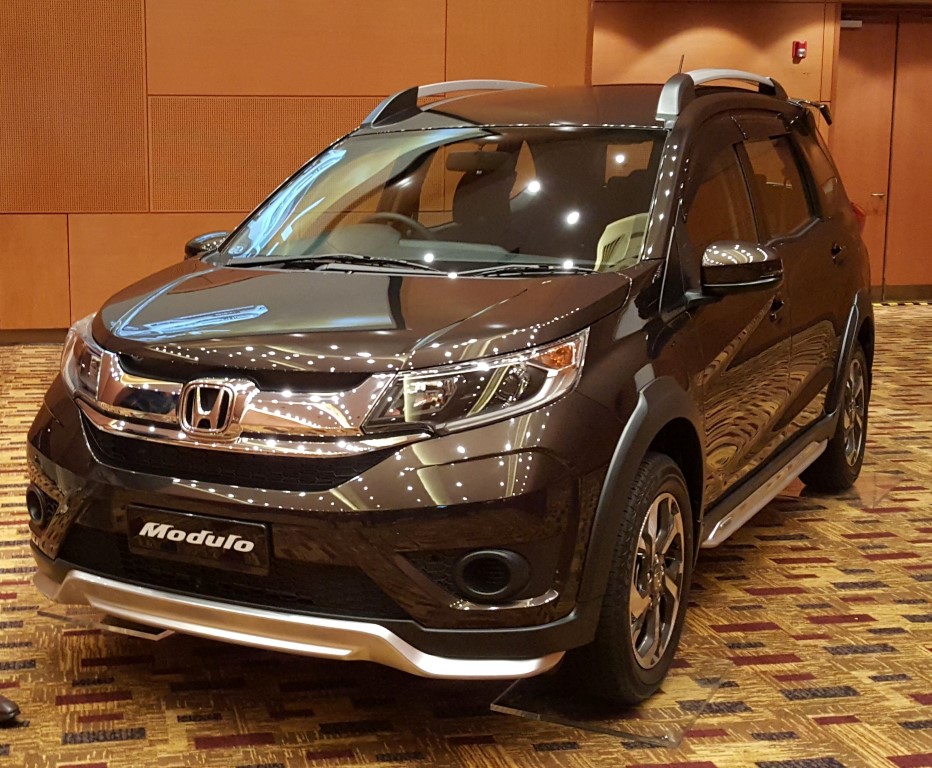KUALA LUMPUR: The new Honda BR-V seven-seater crossover was designed with the comfort of families in mind.
Development of the BR-V also centred on providing nimble sedan-like driving comfort, and also the versatility of an SUV (sport utility vehicle) with a higher ground clearance of 201mm.
"When we designed the BR-V, it was with the family in mind. Hence, the BR-V has features like 11 cup holders, and an efficient rear air-conditioning blower that provides comfort for the second and third rows," said the BR-V's project leader Atsushi Arisaka.

During a recent interview, he also told writers the BR-V has class-leading head, knee and leg room for second row occupants.
"Also, adults can sit comfortably in the third row where the seating position is almost the same as the second row seating in the Honda Jazz hatchback."
For ease of access, the rear door opening of the BR-V is the biggest among Honda's seven-seater vehicles.
As for the mid-way bend on the side window line, Arisaka said it was to provide better visibility for rear occupants.
Meanwhile, to a question on whether the 1.5-litre BR-V would be "under-powered", Arisaka said the BR-V should not pose issues where power is concerned.
The BR-V shares its 1.5-litre engine with the Honda City sedan and Jazz.
Kerb weight for the BR-V is 1,231kg (E variant) and 1,240kg (V variant), compared with the City which weighs 1,075kg to 1,106kg (depending on variant).
"It is more than 100kg heavier than the City, but about 100kg lighter compared with the 1.5-litre Honda Freed minivan."
The transmission is the Earth Dreams M-CVT (continuously variable transmission) found in the 1.8-litre Honda Civic.
"This CVT is a higher capacity-type and can cover a wider torque range, especially during uphill drives and highway acceleration," said Arisaka.
Based on fuel consumption tests in Thailand, the BR-V can deliver 15.5km per litre.

Challenges in developing the BR-V included the layout for the air-conditioning piping for the rear blower.
"We had to find a way to fit the rear air-conditioning piping, without affecting the cabin roominess."
Another challenge was Asean sourcing for the stylish and curved aluminium roof rails on the BR-V.
"It was nearly impossible to find companies with the technology to produce these aluminium roof rails in Asean countries. In the end, we found a supplier in Thailand."
While the BR-V uses the Honda Brio 5-door hatchback's platform, improvements have been made such as higher body rigidity for better safety and ride comfort on highways and rough roads.
"We used the Brio platform because parts commonality is the highest in selected markets."
However, the BR-V also shares components with other Honda models.
"The steering wheel and engine bay design is from the Jazz, and the meter instrumentation is from the City."

The BR-V also earned a maximum 5-star safety rating from the ASEAN New Car Assessment Programme (NCAP).
The BR-V is assembled at Honda Malaysia's Pegoh plant in Malacca, and has been tailored to suit the preferences of Malaysian buyers.
"For example, the suspension settings, tyres and wheels as well as NVH (noise, vibration and harshness) characteristics are specific to the Malaysian market. Also, only Malaysia gets the DRLs (daytime running lights) on the BR-V."
Malaysia is the fifth country to launch the BR-V after Indonesia, Thailand, India and the Philippines.










